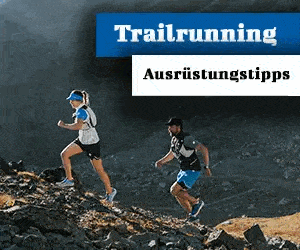Instagram, Facebook and Co have also changed the marketing options for mountaineers. In the meantime, alpinists like to be harshly criticized for their appearances in the digital media. But why actually? And what does a social media pro have to say about it?
An article by Dominik Prantl – published for the first time in the specialist journal mountaineering
No question, Jost Kobusch is a real role model. "Incredible Jost. Highest respect,” one of his followers comments on one of Kobusch’s many Instagram posts from Mount Everest. "Really awesome, how you pull it off," praises another; a third writes: "Hallelujah, blatant shit you're doing." And of course it's multilingual here: "Che spettacolo." Plus lots of universally understandable hand emojis that applaud digitally.
No question, Jost Kobusch is a brutal phony. Led by the chief alpine judge Reinhold Messner, who calls the German mountaineer an “announcement world champion” – and thus guarantees him new attention – mocks the always strict scene of the alpinists. In a survey by the magazine Alpin, around 70 percent of the readers agree with Messner, who by no means only represents opinions capable of majority voting.
"I'm not an influencer. I am a mountaineer who uses modern means of communication.»
Jost Kobusch
For them, Kobusch is considered a narcissist and social media activist, especially after the aborted winter ascent of Mount Everest at 6450 meters. The remaining 30 percent of the specialist medium do not necessarily like Kobusch's approach; they simply support the second option in internet voting.
This reads: "You grow on projects: you have to announce projects today to satisfy the sponsors and to inform the public." One writes: "Welcome to the digital age."
So, is Kobusch basically doing nothing other than moving with the times? Is someone being pilloried out of envy just because they understood how mountaineering 2.0 works? And is one as a boyr alpinistAre you even forced nowadays to disclose your actions in detail and in real time via as many channels as possible, because the world works differently than it did in the heyday of some critics half a century ago?
Kobusch believes that Messner now deserves the term "influencer".
Call Jost Kobusch. He is currently sitting in Chamonix, his adopted home near the highest peaks of the Alps. He takes his job, mountaineering, seriously, which he quickly makes clear when he talks about the daily training and all the other tasks; he has kept “a slot in the calendar” free for the conversation with bergundsteig. However, at first he just thought: "It's best to keep your mouth shut on the subject." Because when people “wanted to diss him, they called me an influencer”.
Apart from the question of what is so bad about the term, Kobusch makes it clear: “I am not an influencer. I am a mountaineer who uses modern means of communication.» He himself would even rather claim that Messner, who has always used modern means of communication, is an influencer. “There is no more sporting activity. But he's active on Instagram."
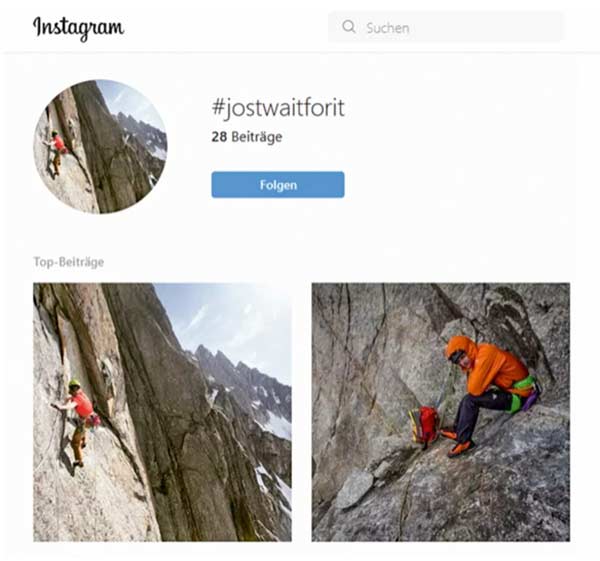
And all this criticism of his person? "I don't care," says Kobusch. Anyone who speaks to Kobusch for a longer period of time realizes that the 29-year-old knows pretty well where he comes from and what he does. So why does he post so regularly and in such detail at all, especially on Instagram, the social medium par excellence of the heavily audiovisually oriented mountain community?
“Firstly,” says Kobusch, “because it's my job. And if you want to do what I do, it's important to be present." After all, it's like this: "If someone gave me a budget and said: 'But please don't post anything for it', then I would do it immediately." And secondly: "There are many people I touch with my stories."
"If someone gave me a budget and said: 'But please don't post anything for it', I would do it immediately."
Jost Kobusch
Social media are also very efficient for this. The more he tells there, the fewer questions he has to answer later, including to journalists. Of course, that's not always true. In 2015, his YouTube post about the avalanche in Everest base camp turned out to be a kind of generator of questions - and was the initial spark of his popularity, which many still find amazing.
The two and a half minute video has now been viewed more than 24 million times. But Jost Kobusch may also be particularly polarizing, so with 33500 followers on Instagram and around 12400 friends on Facebook digitally, he is more of a lightweight in the already comparatively tranquil milieu of alpinists.

The climbing miracle Alex Honnold has 2,5 million followers on Instagram, for example (as of September 2022). Nimal Purja from Nepal collects fans even faster than eight-thousanders, which is why he is aiming for the two million mark under his pseudonym Nimsdai, which has matured into a brand name. And the American world-class climber Sasha DiGiulian now has almost half a million Insta followers who are allowed to watch her adventures in a bikini. With the number of fans, however, the number of skeptics also seems to be growing.
While Honnold, who has no doubts about mountaineering, raises the question, at least among family fathers, whether the El Cap free solo will still fit between the birth of daughter June and the next diaper session, Nirmal Purja has long had doubts about its mountaineering integrity. In a critical report, the Neue Zürcher Zeitung describes him somewhat sourly as a superstar “of the kind mountaineering has never produced before” – despite a number of contradictions regarding his popular heroic deeds. "Millions of followers admire him on social networks," the NZZ continues. In the context of the article, it reads more like a lament than a tribute.
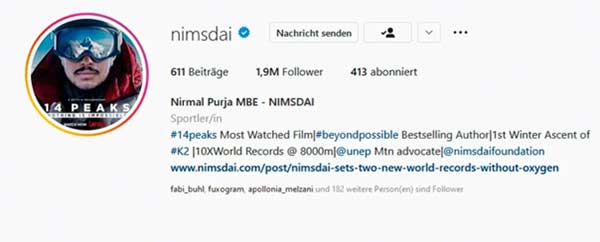
And the fact that climbing barbie DiGiulian, 29, blew up a venture on the Eiger on YouTube according to independent research into an alpinist milestone ("First women's ascent on the Eiger north face"), some still resent her today. At least attention was guaranteed. Where is the boundary between influencer and alpinist? Roger Schäli knows the Eiger like no other. He has nothing against YouTube and Instagram, although the Swiss still belong to the generation that “grew up without Facebook and the Internet”, as he says, and would have gotten the credo “deliver first, then chatter” from home.
He himself describes the digital media as a means to an end that helps you with international networking. He doesn't want to judge someone like Jost Kobusch, even if "as an old-school mountaineer you would probably say: 'First do something other than Everest in winter'." But you should reward your personal approach and performance. It is also important for him to point out that he respects most of his colleagues very much. And as long as no false information is conveyed via the networks, the motto applies to him: "Live and let live."

But Schäli sometimes wonders what different appreciation some mountaineers receive. Established top athletes like Alex Huber, Tommy Caldwell or Ines Papert might not need to be constantly on their iPhones. But he knows young, very good alpinists who find it extremely difficult to market themselves - mainly because of the lack of willingness to present themselves in the best light and the lack of motivation to constantly be on their cell phones and post. "And young girls with the right sex appeal on Instagram get a sponsorship deal every week." It is already clear that alpinism is a self-marketing machine.
“But it has to match the performance. Some people get a disproportionate benefit from that." It is particularly difficult for the uninitiated to tell the difference between professional mountaineers and photogenic influencers hanging out on the rock, especially in the rarely curated flood of information on so-called social media. Basically, it is also about the continuation of a well-known question under new auspices:
Are the best-known and best-paid alpinists really the best? Is the principle of mountaineering being taken downright ad absurdum by social media, where drama and visual power are more important than content and performance? Or hasn't the mere selling of a good story always been more important than the deed on the mountain, which is why the hunt for likes is simply part of the work of a professional mountaineer today?
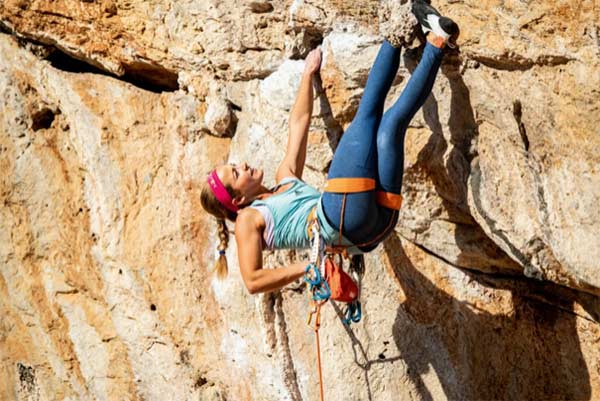
However, by no means every mountaineer is a dedicated Instagrammer. For many, becoming a digital storyteller was simply hard work. The South Tyrolean Tamara Lunger for example, the topic of social media was “brutally annoying” at the beginning. Then she says the beautiful sentence: "It was too far away from the mountain for me." In the end, her manager had to convince Lunger that in the long term it would be about numbers and that the new media were essential in this context.
This initially weighed on Lunger; she speaks of "a difficult process to stay myself". As the child of a hut host family, she really likes her “rural comfort zone” (Lunger); In view of her new openness on the net, her father even reacted with the words: "Yes, such nonsense!" In addition, social media is "quite a time-waster," says Lunger.
For the Swiss Schäli, the constant hanging out in the various channels even means "a loss of quality of life". You have to rest even more in yourself in order not to lose yourself. "In the past, you were much more in your own little world," says Schäli. "A certain navel-gazing is part of the game," says the marketing professional.
Lunger has long been active there for her nearly XNUMX followers. She says: "I can see what kind of potency it has." Incidentally, she has found that mountaineers on social media are quite authentic. When she completely abstained from live news from the base camp during two expeditions, that didn't go well either.
"A certain navel-gazing is part of the game."
Thomas Aichner
"Other people post about you, perhaps to be considered a source of information themselves, and they also spread false information." Above all, she no longer knows a single mountaineer who is supported by sponsors and does not rely on social media.
So without posts, there are no more beeps and therefore no more profits? Thomas Aichner, marketing director of the sporting goods manufacturer Salewa, attests that social media are of great importance in mass communication, especially Instagram, followed by YouTube and Facebook. Because Aichner is clear: "A certain navel-gazing is part of the game." When sponsoring his company, however, he still pays more attention to the values of the athletes than to their popularity in the networks.
The athletes sponsored by Salewa should continue to be among people more than in the virtual world. "I prefer Simon Gietl to give ten lectures and then talk to people over a glass of wine." However, the sponsorship contracts already stipulate that the athletes wear a Salewa outfit on social media pictures and havehtagged the individual company brands. The specification of a minimum number of weekly posts, as he has heard from competitors, is dispensed with.
But he thinks it would be good if athletes were given certain guidelines for working in social networks, as is the case with Red Bull. Despite repeated inquiries, no statement was received from Red Bull itself on the part of the company.
"It's not about whether the competition likes me." In general, however, there is a lot of catching up to do with the accounts of alpinists, at least if you ask Bente Matthes about it. As an online marketing strategist and social media expert, she sees the Instagram appearances of mountaineering professionals less through the ideological glasses of the alpinists than from the perspective of the users and followers.
"It doesn't work without self-portrayal."
Bene Matthes
Jost Kobusch? "Bring some things with you. A person like you and me, a high degree of identification and at the same time a type,” says Matthes. But? "The line is missing. There is no clear message as to what he actually stands for." Alex Honnold? «You just know him. But even then the message is missing. There's still a lot of room for improvement." Nimal Purja? “A channel like that made by people who are prominent. He could tell a lot more. Apparently he doesn't have an eye on his followers or maybe doesn't understand them either."
In any case, one thing is clear to Matthes: "It doesn't work without self-portrayal." It is true that none of the alpinists are doing anything blatantly wrong. “But many rest too much on their reputation. My message can't be: I can really hang in the overhang. That doesn't work in the long run." According to Matthes, it is much more important to be aware of: "What does the target group want and need in order to become a lasting fan of me and my offer, and how can I position myself accordingly?" Matthes doesn't find it reprehensible at all that this naturally also includes a certain sex appeal. "After all, we like to adore someone." In addition, entire companies can now be set up with a clear Instagram profile.
"It's not about whether the competition likes me. It's all about my target group, my fan base. And if a certain target group likes Smurf techno, then they just like Smurf techno,” says Matthes. "Even if that might not be for everyone." In other words: You don't have to like Smurf mountaineering at all. In such cases, Roger Schäli also knows a simple, very personal solution: «We are not only responsible for what we post. But also for who we follow as a user on social media.”
About the author

Dominik Prantl has his journalistic home at the Süddeutsche Zeitung, where he writes mainly for the travel section and about mountains. As a neo-Innsbrucker, also actively helps in the bergundstieg editorial team. That's why he rarely makes it into the mountains.
About the magazine bergundstieg
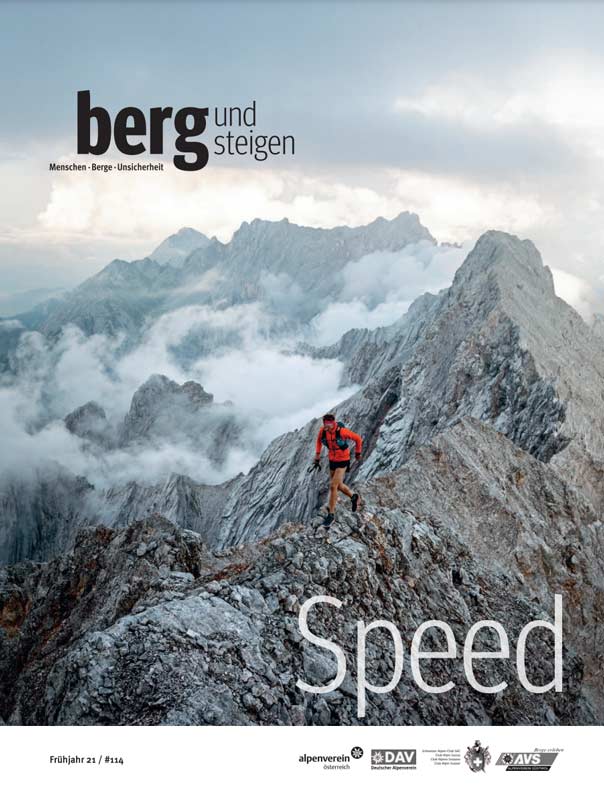
Bergundstieg is an international magazine for safety and risk in mountain sports and illuminates the topics of equipment, mountain rescue, rope technology, accident and avalanche knowledge. Bergundstieg is published by the Alpine Associations of Austria (PES), Germany (DAV), South Tyrol (AVS) and Switzerland (Customer Service).
+ + +
Credits: Cover picture Jost Kobusch


